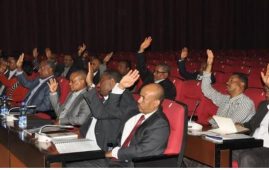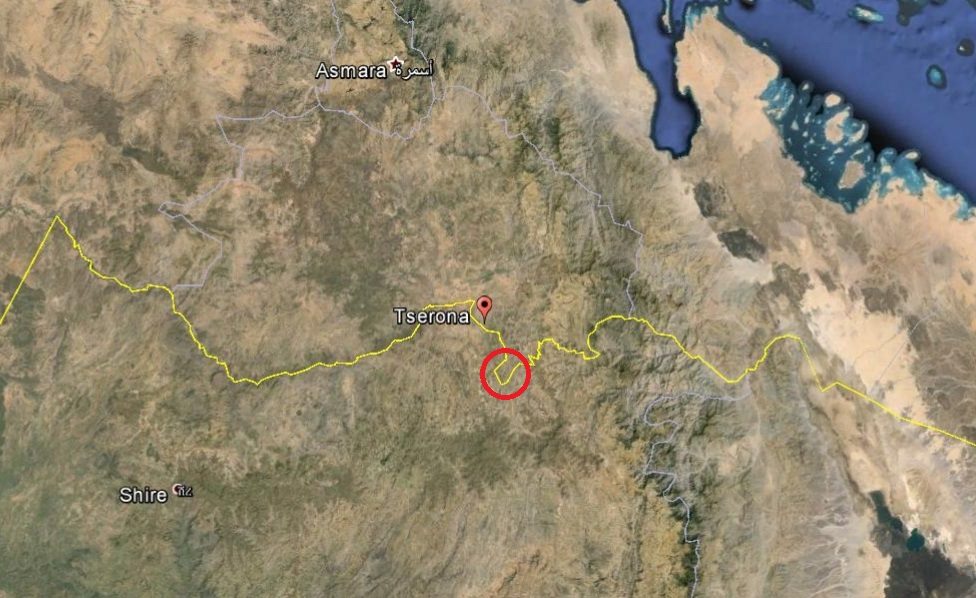In a Special Briefing session on the Current Situation in the Horn of Africa held on Tuesday, US State Department asked the government of Eritrea to disclose Humanitarian needs.
US State Department Assistant Secretary for African Affairs, Johnnie Carson, noted that over 11 million people are in need of emergency assistance in the Horn of Africa, including 3.6 million in Kenya, 4.5 million in Ethiopia , almost 3 million in Somalia. However, he added,
…there may be many more in need of assistance in Eritrea, where a repressive regime fails to provide data on the humanitarian needs of its own people. The free flow of information is what allows people to make early choices that can help avert catastrophe. We urge the Government of Eritrea to cooperate with the UN agencies and other international organizations to address the issue of hunger and food shortage in that country.
Responding to questions from journalists, Mr. Carson remarked:
QUESTION: Camille Elhassani from Al-Jazeera English Television. I had a question about Eritrea. You – Mr. Carson, you’ve called for them to provide the data so that you know what the situation is there. Has there – have you seen refugees from Eritrea moving into neighboring countries, and do you have an expectation that they are going to cooperate so that you and the other international community can help them?
ASSISTANT SECRETARY CARSON: Eritrea is a closed and increasingly reclusive country, and its government has not been particularly helpful in sharing data and information about the severity of the food shortages or the drought in its country. Because it is a part of the Greater Horn of Africa, we assume that conditions in Eritrea are probably quite similar to the drought conditions that we are seeing in other places – in Ethiopia and in Kenya,
Djibouti, and in Somalia. Because we don’t know what’s happening, our understanding of the situation is limited, but we encourage them to be more open about their needs and the needs of their population.
Mr. Carson’s rem,ark is not to be taken lightly as FEWS NET, the USAID-supported Famine Early Warning System Network, predicted the current crisis months ago and is likely to have indicative data regarding the situation in Ethiopia.
Eritreans liken their President Isaias Afeworki to former Ethiopian President Mengistu Hailemariam due to his repressive rule. It is to be seen if Isaias will complete the resemblance by concealing a humanitarian crisis as Mengistu did during the 1984/5 famine.
Speaking on Somalia, Mr. Carson noted the problem by Al-Shabaab which also has so far stood on the way of humanitarian efforts. Carson said:
An especially complex and difficult component of the Horn of Africa’s humanitarian crisis is the high number of Somali refugees flowing into both Ethiopia and Kenya. This is a result of three overlapping and intersecting problems. The first is the extreme climate-induced drought that has prevailed intensely for the past two years and cyclically for more than 50 years. The second is the absence of a functioning central government in Somalia for over two decades. And the third is the presence of the anti-Western terrorist organization Al-Shabaab in south central Somalia. Al-Shabaab’s activities have clearly made the current situation much worse. In January 2010, Al-Shabaab prohibited international humanitarian workers and organizations from operating in their areas of control. And its continued refusal to grant humanitarian access has prevented the international community from responding to and mitigating some of the cumulative and most disastrous consequences of the drought in south central Somalia.
We have seen the recent reports that Al-Shabaab claims that it will finally allow international humanitarian aid into areas under its control. We are consulting with international organizations that have worked in these areas to verify if there has been any real change in Al-Shabaab’s policies that would allow us and others to operate freely and without taxation imposed for humanitarian deliveries. Al-Shabaab’s current policies are wreaking havoc and are not helping Somalis living in the south central part of that country.






Eritreans prefer to die than to beg.
Daniel Berhane
The Famine in Somalia. The Use of Food as an Instrument of Warfare
U.S. and Ethiopia Kill Somalis With Food Weapon
by Glen Ford
The drought that threatens more than ten million lives in the Horn of Africa has been made vastly more deadly by U.S. and Ethiopian use of food as a weapon of war. The Americans last year forced the collapse of cooperation between aid agencies and Shabab resistance fighters in Somalia. And Ethiopia, a center of the drought, has virtually sealed off its rebellious Ogaden region from outside observers and aid providers, including the International Red Cross, in order to conceal its brutal, collective punishment of ethnic Somalis.
“The Ethiopian government has blocked the International Red Cross and other aid agencies from carrying out relief work in the region.”
At least 10 million people are in danger of starvation in Kenya, Djibouti, Ethiopia and Somalia, under the worst drought conditions in 60 years. This should be taken as fact. But when it comes to which humans are to blame for relief supplies being unavailable to the victims, don’t believe a word that the United States government says. Washington is not only the greatest purveyor of violence in the world, it is also the biggest liar on the planet, none of whose words can be taken at face value.
Read the full articel so that you learn.
Daniel Berhane
Who are you??? Are a USA puppet or ???
OK…..Just give us the data. Nothing more 🙂
How many times we told you we Eritreans don’t need your aid, we are hard workers give your aid for those who need it or burn it. Just leave us alone.